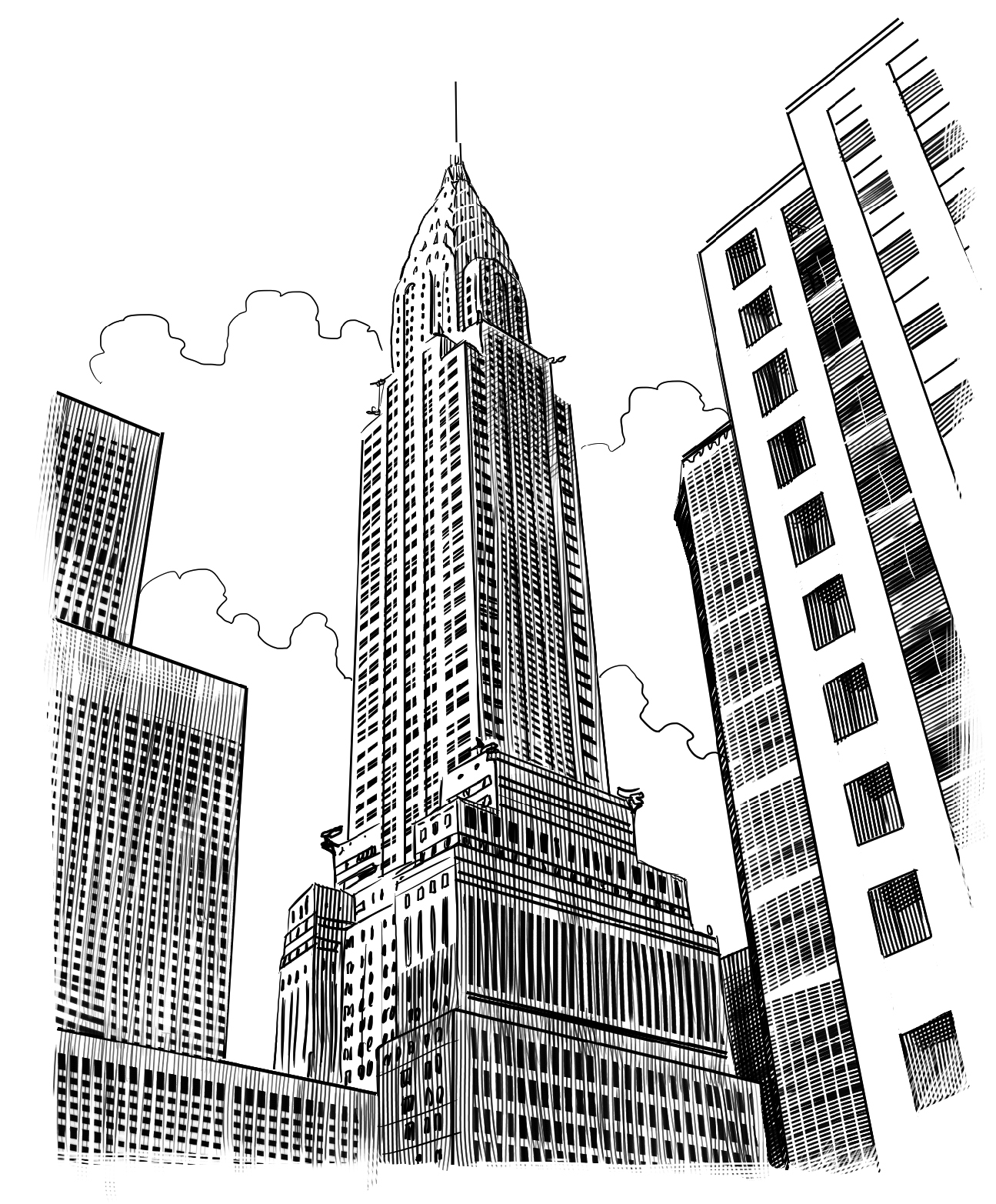CHAPTER 9
The Tower Today
Gustave Eiffel’s tower still stands proudly beside the Seine River. His dream to create a structure that would remain forever has come true. It is considered one of the most important landmarks in Paris and one of the world’s greatest buildings.
Gustave died at his home in Paris on December 27, 1923. He was listening to a recording of Beethoven’s Symphony No. 5. He was ninety-one years old. Much of his long life was spent in his tower. He conducted experiments with metal, wind, flight, weather, and radio waves, and he checked to make sure that all was well with his most beloved building.
The Eiffel Tower is no longer the tallest structure in the world. In 1930, the Chrysler Building in New York City took over that record. Even taller buildings followed. But few structures can match Gustave Eiffel’s wrought-iron masterpiece for creativity.

The Chrysler Building
Night after night, the “Iron Lady,” as the tower is often called, continues to shine in Paris. Almost seven million people visit each year, more than any other monument in the world. Three out of four come from countries other than France. Some climb the steps all the way to the top. Others ride the glass elevators. A few call the tower ugly, but most disagree. They use words like original, unusual, brilliant, elegant, a dancing wonder, a magical masterpiece.
The Eiffel Tower is not exactly the same as it was in 1889. The elevators are faster and more efficient. There are more shops and restaurants. The tower is no longer red. Painters use a bronze color now.
By 1981, the tower was in need of a major reconstruction. It was almost one hundred years old. Newer and heavier equipment, restaurants, shops, and antennas had been added over the years. The excess weight was causing problems.
The tower was made one hundred tons lighter. Many of the earlier, heavy ornaments and decorations were removed. New, lighter materials were used.
Elevators and staircases were updated. Security measures were installed.
In 2014, a new, lighter, illuminated glass first floor was added. It is a big hit with visitors.

Gustave Eiffel’s original office has been restored. Visitors can see wax models of Gustave and Thomas Edison along with the phonograph that Edison brought as a gift.
Visitors can choose between fine dining restaurants, bars, or buffets serving snacks and sandwiches. They can buy postcards and other souvenirs in the shops. In winter, visitors can even skate on a temporary rink.

What makes the Eiffel Tower so exciting has not changed. From the top, people still look down in wonder on the beautiful city of Paris.

The lit-up tower can still be seen from all over the city. In 1889, hundreds of gas lamps made it shine. Today, twenty thousand lightbulbs twinkle for five minutes every hour on the hour each night.
On special occasions, lights are coordinated with music, and the tower seems to be dancing.
At times, the whole tower shines blue, white, and red: the colors of the French flag.
It has been almost 130 years since Gustave first attached a French flag to the top of his newly opened creation. It was supposed to be torn down twenty years later. But it is still there today, standing tall, welcoming visitors from all over the world.

Four Towers



